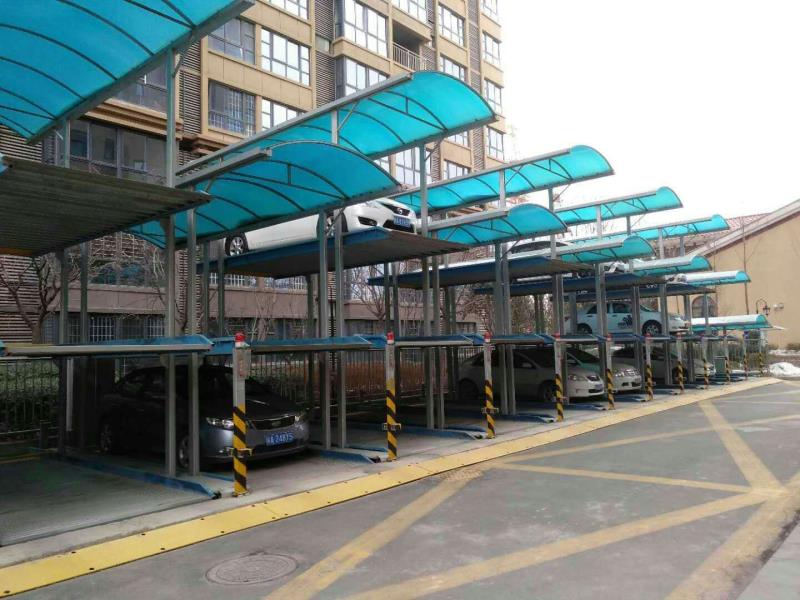Against the backdrop of increasingly scarce urban parking resources, simple lift parking equipment, with its characteristics of “low cost, high adaptability, and easy operation”, has become a practical solution to solve local parking problems. This type of equipment usually refers to parking devices that use mechanical lifting principles (such as wire rope traction, hydraulic lifting), have simple structures, and do not require complex automation systems. They are commonly found in small and medium-sized places such as residential areas, shopping malls, and hospitals. The core function is to transform limited land into multi-level parking spaces through vertical space expansion.
From the perspective of application scenarios, the flexibility of simple lifting devices is particularly prominent. When the ratio of parking spaces in old residential areas is insufficient due to delayed planning, a pit type lifting parking space can be installed in the open space in front of the unit building – raised during the day as a temporary parking space and lowered to the ground at night for owners to park; During holidays and promotional periods, shopping malls or hotels can deploy equipment near the entrance of the parking lot to quickly replenish temporary parking spaces and alleviate peak pressure; Even areas with concentrated traffic, such as hospital emergency departments and school pick-up points, can achieve fast stopping and rapid movement of vehicles through simple equipment that can be installed and used immediately.
Its core advantage lies in the balance between “economy” and “practicality”.
Compared to fully automated three-dimensional garages (requiring PLC control and sensor linkage), the cost of simple lifting equipment is only 1/3 to 1/2, the installation cycle is shortened by more than 60%, and maintenance only requires regular checks on the wire ropes or motor status, with lower technical requirements for operators. At the same time, the equipment is highly adaptable to existing sites: the pit type can utilize green redundant areas (leveled with the ground after covering with soil), while the ground type only needs to reserve 2-3 meters of operating space, with minimal impact on greening and fire exits.
However, in actual use, attention should be paid to standardized operation and regular maintenance. For example, when parking a vehicle, it is necessary to strictly follow the load limit (usually marked with a limit of 2-3 tons) to avoid overloading causing wire rope breakage; Pit type equipment needs to be waterproofed (such as setting up drainage ditches and waterproof coatings) to prevent water accumulation and corrosion of the structure during the rainy season; Users should follow the process of “confirming that the parking space is vacant before starting the lift” to avoid accidental triggering and safety accidents.
With technological iteration, some simple lifting devices have incorporated intelligent elements, such as installing license plate recognition cameras to automatically match parking spaces, remotely scheduling lifting times through mobile apps, or integrating anti fall sensors and overload alarm devices to enhance safety. These improvements further enhance the applicability of the equipment, upgrading it from an “emergency supplement” to a “regular parking plan”.
Overall, the simple lift parking equipment has become a “micro patch” in urban parking systems with the characteristics of “small investment and quick effect”, providing a practical and feasible solution to alleviate parking conflicts under limited resources.
Post time: Jul-24-2025
